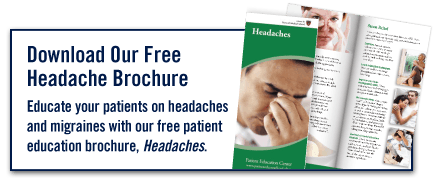About 38% of people who suffer from migraine could benefit from preventive treatments, but less than one-third currently uses them. Some analyses have shown that migraine attacks can be reduced by more than half with preventive therapies.
In 2000, the American Academy of Neurology (AAN) published guidelines for migraine prevention. In the April 24, 2012 issue of Neurology, the AAN and the American Headache Society issued updated guidelines to account for new evidence. One set of guidelines was developed specifically for prescription products, while another was created for OTC drugs and complementary therapies. In each guideline, the safety and efficacy of pharmacologic therapies for migraine prevention was addressed. The reviews addressed the strength of evidence backing a given drug’s superiority relative to placebo.
Prescription Drugs for Migraine
Among prescription medications, several β-blockers (metoprolol, propranolol, and timolol) and seizure drugs (divalproex sodium, sodium valproate, and topiramate) established “proven efficacy” for migraine prevention based on clinical research. One selective serotonin receptor agonist (frovatriptan) was also proven effective. It’s recommended that clinicians consider offering these medications to migraineurs to reduce the frequency and severity of attacks.
Topiramate was elevated to a Level A recommendation (indicating “proven efficacy”) on the strength of five randomized trials. Other drugs that had previously been used for migraine prevention were downgraded from higher recommendations in 2000 because the current evidence failed to clearly support their efficacy.
OTCs & Complimentary Therapies for Migraine
Petasites, also known as butterbur, were shown to be effective in preventing migraine. Several NSAIDs were found to be “probably effective,” including fenoprofen, ibuprofen, ketoprofen, naproxen and naproxen sodium, and subcutaneous histamine. Magnesium, MIG-99 (feverfew), and riboflavin were among the complementary treatments that were deemed “probably effective” for migraine prevention.
Botulinum Toxin-Based Drugs
The 2012 guidelines did not address the use of botulinum toxin-based drugs for migraine because these were covered in a separate AAN review published in 2008. That review indicated that botulinum toxin was “probably ineffective” for preventing episodic migraine. However, botulinum toxin has since been approved for preventing chronic migraine. The AAN is currently developing a guideline update that specifically addresses research and data on this treatment.
Important Considerations in Migraine Therapy
There are no absolutes when determining which patients are the ideal candidates for migraine therapies, but some common identifiers include frequent attacks, acute medication use beyond the recommended limits, or consistent use of acute therapies that fail to provide relief. Regular follow-up with patients is important to discuss changes in the pattern of migraine attacks and the efficacy of therapies being used. Physicians and patients are encouraged to collaborate with each other when deciding on treatment options. The key is to consider efficacy, adverse events, and coexisting or comorbid conditions as well as personal considerations. Patients should be reminded that trial and error with therapies will often be necessary.




 Janine Anthes
Janine Anthes